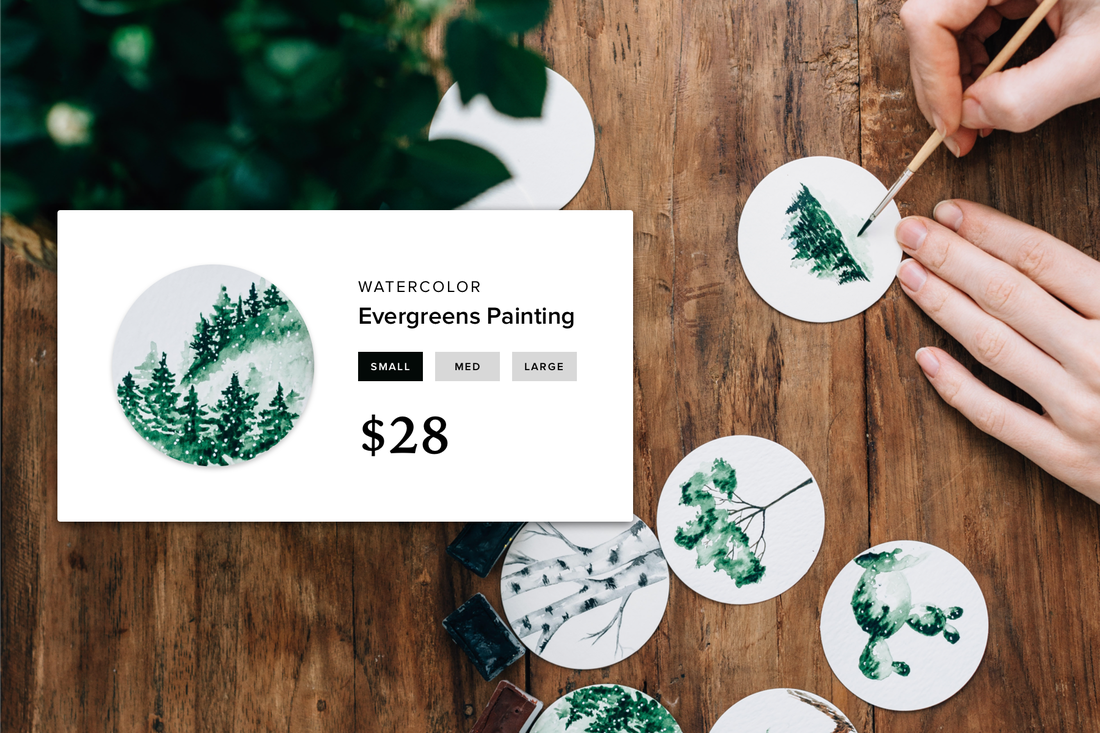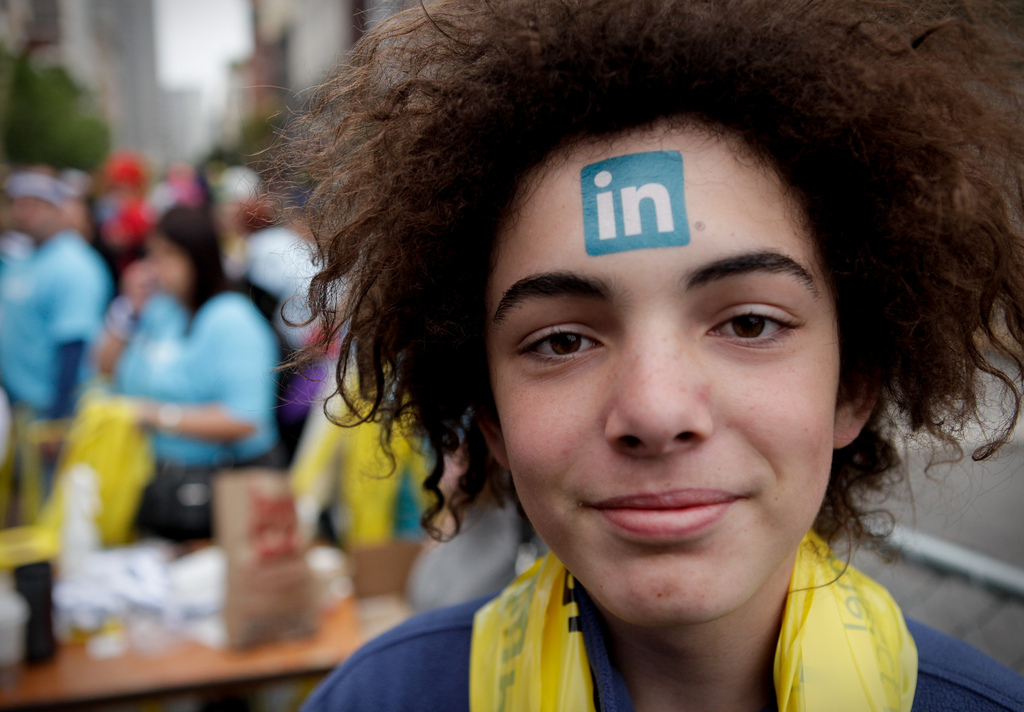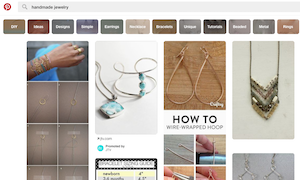Are you on LinkedIn? If you're connected at all through social media, have been employed, have tried freelancing, are a consultant, or want to position yourself as a thought leader in any industry, chances are you at least have a profile.
What you may not know is that LinkedIn is one of the fastest growing social networks out there (surprising, isn't it!). LinkedIn boasts 347 million users, and 40% of those users are checking the site daily, looking for professional connections, industry insight and community. As a company, LinkedIn is flourishing and it appears they're in it for the long haul. So the only question that remains is — how are you leveraging LinkedIn's popularity and growth as part of your business marketing strategy?
Before you invest a lot of time and money into any social network, it's prudent to do some market research of your own. Where do your customers and clients gather online? For some industries — certain types of retail for example, artists and musicians, it might not make sense to reach out on LinkedIn. But if your work is in B2B, marketing and advertising, nonprofit or professional services, LinkedIn is ideal for reaching a broad network of industry professionals.
As an example, last year I worked as a social media consultant with a California-based organization called Warrior One. Warrior One offers online mindfulness meditation classes and continuing education for attorneys. We struggled to meet their audience on Twitter and even Facebook, where power-user attorneys tend to shy away from public profiles. But we struck gold on LinkedIn — where Warrior One has been growing a steady network of engaged and interested followers ever since.
So how do you develop a LinkedIn marketing strategy that you can manage?
First you should create a company page. According to LinkedIn consultant Wayne Breitbarth, use of company pages has nearly doubled on LinkedIn in the last year. To add a company page, you'll select Interests and then Companies from the main site navigation. In the box on the right, choose “Create a Company Page" and proceed to fill out your business profile.
Next you'll want to make sure your own professional LinkedIn profile is up-to-date and as polished as possible. After all, you want to posit yourself as an industry expert. Network far and wide, and make as many connections as you can. Join a few interest groups (more on groups in a bit!) and engage with your network. Be friendly, helpful and authentic. In other words, be your professional self.
Once your company page and personal profile are looking good, create a schedule to share your content. This can be as simple as sharing links to your website and cross-posting your social media from Facebook or other networks. One really great LinkedIn feature that is often overlooked is the personal blog pages.
LinkedIn has a new longform publishing platform that is available to industry professionals. Posts that you make here not only go out to your network, where they are shared, cheered and passed around, but they're also posted to your personal profile — so make them impactful. Use the blogging tool as a way to demonstrate your expertise and establish your professional credibility.
No time for writing another article? There's nothing to say you can't use the same content you're also posting to your newsletter and blog. A simple content editorial schedule might look like this:
Another hidden LinkedIn marketing strategy is the group feature. We tested this out with Warrior One with great success. By creating a professional networking group for users in its niche, the company was able to establish itself as a leader, reach more engaged users and grow more organically. You don't want to treat your group exclusively as a marketing tool though. Make sure you give your members ample platform to connect, chat and share. Start discussions, ask thoughtful questions and share relevant content, but don't directly advertise or spam (LinkedIn has strict policies about spamming or marketing to groups).
By engaging directly with its audience on LinkedIn, sharing valuable content and connecting on a professional and personal level with interested potential clients and customers, Warrior One was able to fill their classes and retreats for 2014.
While LinkedIn might not be the best network for all types of businesses, for some, it's the perfect place to meet with ideal clients and customers. If you haven't considered LinkedIn as part of your social media marketing strategy, you could be leaving money and valuable professional connections and opportunities on the table.
Image Credit: smi23le/Creative Commons
Before you invest a lot of time and money into any social network, it's prudent to do some market research of your own. Where do your customers and clients gather online? For some industries — certain types of retail for example, artists and musicians, it might not make sense to reach out on LinkedIn. But if your work is in B2B, marketing and advertising, nonprofit or professional services, LinkedIn is ideal for reaching a broad network of industry professionals.
As an example, last year I worked as a social media consultant with a California-based organization called Warrior One. Warrior One offers online mindfulness meditation classes and continuing education for attorneys. We struggled to meet their audience on Twitter and even Facebook, where power-user attorneys tend to shy away from public profiles. But we struck gold on LinkedIn — where Warrior One has been growing a steady network of engaged and interested followers ever since.
So how do you develop a LinkedIn marketing strategy that you can manage?
First you should create a company page. According to LinkedIn consultant Wayne Breitbarth, use of company pages has nearly doubled on LinkedIn in the last year. To add a company page, you'll select Interests and then Companies from the main site navigation. In the box on the right, choose “Create a Company Page" and proceed to fill out your business profile.
Next you'll want to make sure your own professional LinkedIn profile is up-to-date and as polished as possible. After all, you want to posit yourself as an industry expert. Network far and wide, and make as many connections as you can. Join a few interest groups (more on groups in a bit!) and engage with your network. Be friendly, helpful and authentic. In other words, be your professional self.
Once your company page and personal profile are looking good, create a schedule to share your content. This can be as simple as sharing links to your website and cross-posting your social media from Facebook or other networks. One really great LinkedIn feature that is often overlooked is the personal blog pages.
LinkedIn has a new longform publishing platform that is available to industry professionals. Posts that you make here not only go out to your network, where they are shared, cheered and passed around, but they're also posted to your personal profile — so make them impactful. Use the blogging tool as a way to demonstrate your expertise and establish your professional credibility.
No time for writing another article? There's nothing to say you can't use the same content you're also posting to your newsletter and blog. A simple content editorial schedule might look like this:
- Send your newsletter out on a Tuesday morning.
- Post to your blog on Thursday.
- The following Monday, paste that same article into LinkedIn.
Another hidden LinkedIn marketing strategy is the group feature. We tested this out with Warrior One with great success. By creating a professional networking group for users in its niche, the company was able to establish itself as a leader, reach more engaged users and grow more organically. You don't want to treat your group exclusively as a marketing tool though. Make sure you give your members ample platform to connect, chat and share. Start discussions, ask thoughtful questions and share relevant content, but don't directly advertise or spam (LinkedIn has strict policies about spamming or marketing to groups).
By engaging directly with its audience on LinkedIn, sharing valuable content and connecting on a professional and personal level with interested potential clients and customers, Warrior One was able to fill their classes and retreats for 2014.
While LinkedIn might not be the best network for all types of businesses, for some, it's the perfect place to meet with ideal clients and customers. If you haven't considered LinkedIn as part of your social media marketing strategy, you could be leaving money and valuable professional connections and opportunities on the table.
Image Credit: smi23le/Creative Commons
 Melissa Haney Melissa is a writer specializing in social media and web development.
Melissa Haney Melissa is a writer specializing in social media and web development.





